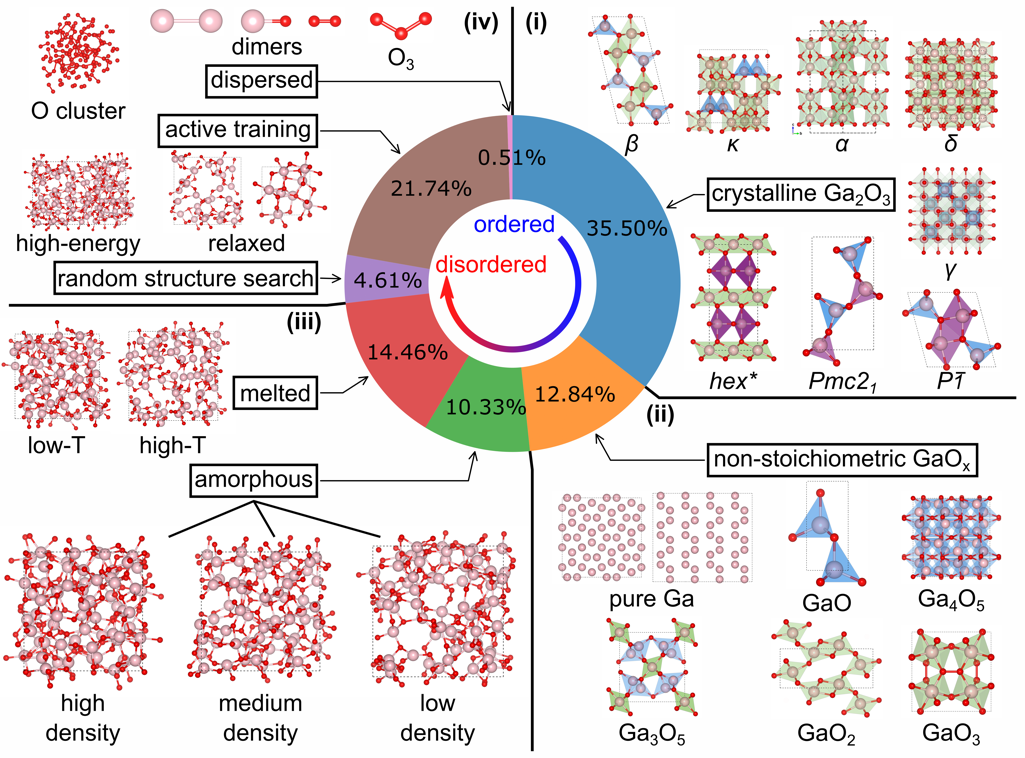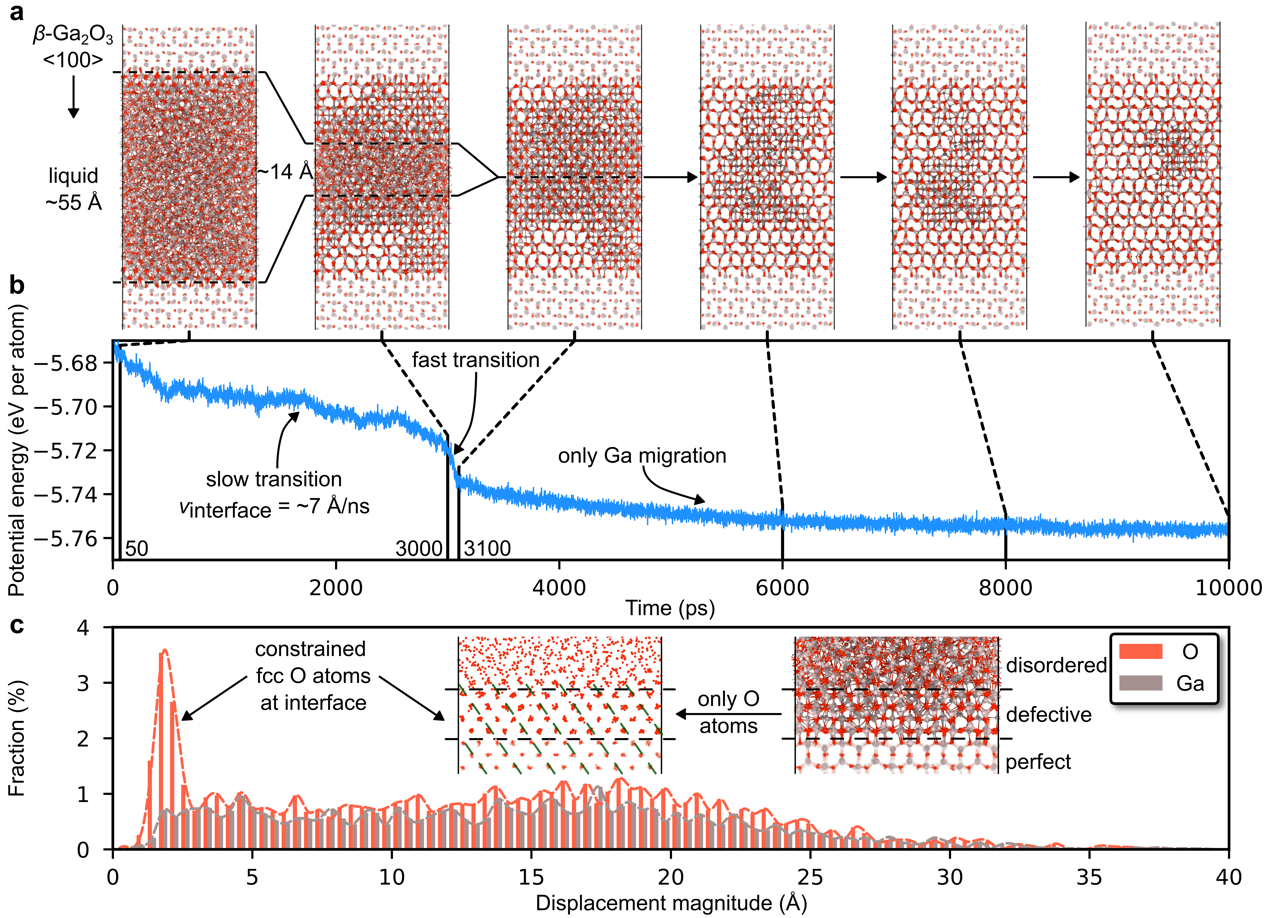Gallium oxide (Ga2O3) emerges as a vital fourth-generation ultrawide bandgap semiconductor material and exhibits outstanding physical properties that hold the promise of surpassing the theoretical limitations of current semiconductor materials. It has significant potential for applications in electronic power devices, solar-blind detection, and high-temperature gas sensing. However, due to the high complexity of the Ga2O3 system, existing computational studies have been confined to first-principles calculations at the scale of a hundred atoms.
Research addressing crucial scientific and technological inquiries related to Ga2O3 necessitates large-scale computational frameworks involving tens of thousands of atoms or more. The computational demands associated with such systems are prohibitively vast, rendering it impractical to rely solely on first-principles calculations for comprehensive investigations.

In recent developments, Research Assistant Professor Junlei Zhao and Professor Mengyuan Hua from the Department of Electronic and Electrical Engineering (EEE) at the Southern University of Science and Technology (SUSTech) have achieved a breakthrough by combining advancements in Ga2O3 semiconductor technology with cutting-edge machine-learning techniques to successfully devise an interatomic potential capable of simulating multiphase coexistence within Ga2O3 on a large scale. This innovative approach delves deep into the mechanisms governing growth and investigates critical structural properties. The research holds paramount significance in accelerating the maturation of Ga2O3 semiconductor technology and resolving pivotal technological challenges pertaining to the engineering of multiphase coexistence of Ga2O3 systems.
The outcomes of this research have been documented in a paper entitled “Complex Ga2O3 polymorphs explored by accurate and general-purpose machine-learning interatomic potentials,” which has been published in the esteemed computational materials journal npj Computational Materials.

Figure 1. Summary of the self-developed Ga2O3 machine-learning database in this study
In a significant research endeavor, a comprehensive first-principles database for the diverse multiphase configurations of Ga2O3 has been successfully constructed, as illustrated in Figure 1. Employing Gaussian process regression, a machine learning algorithm, the database has been meticulously trained and fitted to generate multiple versions of potentials from the same generation. These potentials are then subjected to rigorous testing using a proprietary automated testing software package, which systematically evaluates the accuracy, generality, and computational efficiency of each parameter version of the potential. The outcome of this iterative process is an optimized version of the potential.

Figure 2. The molecular dynamics simulation of interfacial recrystallization in the solid-liquid phase is studied using machine-learning interatomic potentials.
This research effort has resulted in the public release of the interatomic potentials that combine remarkable accuracy, versatility, and computational efficiency. The potentials can effectively simulate the structural evolution processes of Ga2O3 systems at the scale of tens of thousands to millions of atoms. The application of these potentials in molecular dynamics simulations has led to the unveiling of complex dynamic processes involving the independent behavior of Ga and O sub-lattices during the solid-liquid interface recrystallization of β-phase Ga2O3 (Figure 2).
The success of this study opens avenues for further investigations in critical areas of Ga2O3 material research. The subsequent application of the developed potentials holds immense promise in elucidating phenomena such as phase transitions induced by high-energy ion irradiation, lattice thermal transport mechanisms, and gas-phase epitaxial growth. The potentials’ capabilities offer a profound impact on advancing our understanding of Ga2O3 materials and hold substantial implications for the development of groundbreaking technologies in various domains.
Res. Asst. Prof. Junlei Zhao is the first and one of the corresponding authors of this paper. Prof. Mengyuan Hua is a corresponding author, and SUSTech is the first affiliation of the paper.
This study was supported by the National Natural Science Foundation of China (NSFC), Guangdong Basic and Applied Basic Research Foundation, and the Shenzhen Fundamental Research Program.
Paper link: https://doi.org/10.1038/s41524-023-01117-1.
To read all stories about SUSTech science, subscribe to the monthly SUSTech Newsletter.
Proofread ByAdrian Cremin, Yingying XIA
Photo By